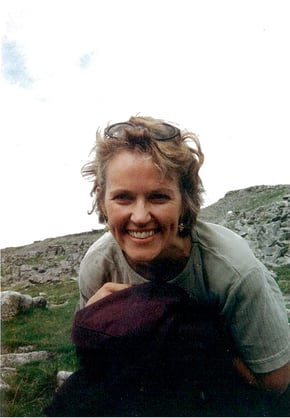One of the exciting developments in the field of neuroscience is the use of neuroimaging to examine the precise neural pathways and brain regions involved in many cognitive activities, including learning, memory storage and retrieval, and even those involved in making voluntary choices.
As noted in a previous post, being made in God’s image involves two aspects of humanity: our distinct type of intelligence and our ability to make free choices. We’ve also posted on how neurological hardwiring for social connections reflects our relational nature. In this post we’ll look at what neuroscience might be able to tell us about the concept of human freedom.
Human agency
According to the Stanford Encyclopedia of Philosophy, the term “free will” is “the canonical designator for a significant kind of control over one’s actions.”
This experience of being in control of one’s actions—although imperfectly at times—and being an effective agent of change in oneself or in the environment is one of the fundamental experiences of being human. The psychologist Albert Bandura uses the term “human agency.” (See a previous Magis post.)
Unfortunately, many neuroscientists and some psychologists interpret the discovery of the neural networks involved in voluntary action to mean that humans are not “free” agents capable of making “free” choices. In fact, in a 2008 study published in Nature with the title, “Human volition: towards a neuroscience of will,” the researcher proclaimed:
“Finally, modern neuroscience is shifting towards a view of voluntary action being based on specific brain processes, rather than being a transcendental feature of human nature.”
In his book, “The Soul’s Upward Yearning”—and in many lectures and articles—Fr. Spitzer has argued that there is evidence for a transphysical aspect of the human person, so the above claim deserves to be examined on those grounds alone. More specifically, if we are hardwired to respond in a particular way, should we despair of ever being able to change? In the larger picture, it brings up the question of responsibility for one’s actions, even to the point of culpability within criminal justice systems.
One interpretation of the data
To restate the claim made in the Nature article: scientists have discovered specific brain areas and neural networks involved in voluntary actions, and it is these mechanisms or circuits which make the decision, not the person! Why this interpretation?
“Everyday language suggests that 'I' consciously choose to perform actions and that 'my' choice somehow causes the action to occur. This language is dualistic, as it implies a mental 'I' that is distinct from both the brain and the body but that can nevertheless trigger brain events and, thus, bodily movement. -Patrick Haggard, "Human Volition: Towards a Neuroscience of Will"
The scientist’s complaint is the idea of an “I” separate from the brain/body is a “ghost in a machine.” In their view, it is the neural networks which “cause the distinctive conscious experience of intending to act and then controlling one's own actions” (emphasis added). The materialistic answer is clear: choices have neurobiological causes and any experience of free choice is an illusion.
Challenging the interpretation of scientific descriptions
It would be impossible to unpack all the necessary distinctions in such a short post, but a few important ones stand out. For starters, however, here is an obvious question: should the goal of scientific inquiry be to “prove” that free will is just an illusion?
So the first key distinction is between a biological description of the mechanisms of voluntary action and “freedom” as a quality of human consciousness and agency. Ultimately, reducing voluntary action to its neurobiological components rests on the assumption that efficient, material causality is a sufficient explanation for a mental phenomenon—the conscious “I” doing/choosing the action. Theories of emergence even within the natural sciences, however, contradict that interpretation and can shed light on this debate as we will see.
Secondly, the rational soul as a “ghost in a machine” reflects the Cartesian duality of mind vs body, but this view is not the only understanding of “soul” or even of consciousness.
The “ghost in a machine”: mind vs matter
The empirical scientist works within the world of matter and efficient causality. The human mind, however, is capable of looking at the same physical reality under a different aspect: what makes human intelligence unique, how do we distinguish it from animal intelligences, and so on? According to philosopher Robin Collingwood, the role of philosophy is, in fact, “to discern different senses even when there is only one referent.”
The soul is not a ghost in a machine
The Catholic position is that human beings are a unity of soul and body. Aquinas designates the soul as the “substantial form” of the body, true, and argues that it subsists after bodily death. Using this type of language might create the image of a “ghost in a machine.” On closer examination, however, it is clear that his language is necessary to distinguish a particular aspect of both our intelligence and freedom from the material features of a human being.
The theologian Philip Clayton puts it this way:
“A living body and a functioning brain are necessary conditions for personhood, yet the irreducible gap between the third-person vocabularies of the neurosciences and the first-person vocabularies of psychology and intuition suggests that they are not sufficient conditions.” -Phillip Clayton
Or as stated in this article on St. Thomas Aquinas:
It is Socrates the animal who knows and wills, not his mind interacting with his body. (See also Summa Theologica First Part Q.75)
Emergence of consciousness
Human consciousness has been dubbed “the hard problem” and is at the heart of many debates about intelligence and free will. The human experience of “being free to choose otherwise,” versus the causal factors at work motivating and driving our choices, is one of the hallmarks of a transphysical soul as explained by Fr. Spitzer. (For another informative presentation go here.)
One way of tackling the problem is through the concept of emergence: the irreducibility of a whole organism (or system) to the many parts which have given rise to it. According to Clayton, as many as 28 levels of emergence have been identified in the natural world, but the following three can illustrate the point:
(1) quantum physics to macrophysical systems and chemistry;
(2) chemistry to complex biological organisms and ecosystems;
(3) the brain and central nervous system to the phenomena of consciousness, or mind
In other words, if emergent properties are irreducible to their component parts, then no amount of discovered efficient causes can account fully for the human experience of consciousness and agency.
Influenced but not controlled—more than the sum of our biological parts
We are more than the sum of our neural networks, DNA, and biological functions. Science tells us so, as revealed by discoverable levels of complexity in the natural world.
For a Christian, however, the science of voluntary action can give us pause when passing judgment on other people’s actions. Different kinds of “hardwired” responses can be generated by past trauma, underlying conditions such as spectrum disorders, and even nutritional deficits.
This is not a free pass for those who suffer from such “wiring.” Although science has shed light on our ability for “top-down” control—with more effective tools for making changes under investigation—for some people, overcoming these limitations is significantly more challenging than for others.
An individual’s hardwiring might also make it easier to be or become virtuous. In either case, we are children of a loving Father capable of growing in love and virtue.
“Be kind to one another, for we are all fighting a great battle.” -Ian Maclearan
It is good to remember that we are all in this together. We always have been.
Let’s not forget that.
Read Also:
Made in God’s Image; or Are We?
Made in His Image: the Social Synapse and the Neurobiology of Connection

